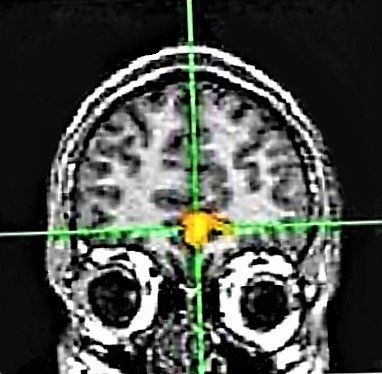Professor Tantam thinks the center for this brain wi-fi is in the prefrontal cortex, where the neuron activity associated with the senses of smell and sight are located.
That activity may activate the sense of sight to make eye contact or pick up minute visual clues to what the other person might be thinking. This all happens subliminally “in the background” of the brain and we have no clue that we’re picking up those clues.

Tantam points to the fact that people avoid making eye contact in crowded trains or buses. While that may be a conscious maneuver to dodge an unwanted conversation or groping, it may also be an unconscious decision by a brain that is overloaded with unsolicited communications and can’t process any more.
A professor of clinical psychology at the University of Sheffield believes the micro-signals our brains are sending and receiving can explain gut feelings, intuition, mob mentality, religion and that uncomfortable feeling people get in crowded subways or buses (and you thought it was just the smell).
In an interview with The Telegraph, he describes the communication as an “inadvertent leak,” possibly a minute body odor release associated with changes in body chemistry caused by emotions like fear or sexual arousal.
His research has led him to believe that there is an invisible connection between human brains whose bodies are in close proximity with each other.
“We can know directly about other people’s emotions and what they are paying attention to. It is based on the direct connection between our brains and other people’s and between their brain and ours. I call this the interbrain. One of its advantages is that the connection exists in the background. We take it for granted unless it is brought to the surface of our minds.”

This brain wi-fi may also have a form of net neutrality. The interbrain may block communications of negativity such as hate or anger, causing people to have difficulty seeing the strong emotional feelings of others.
Finally, Tantam thinks that Internet communications, which are slower than face-to-face conversations and lack the sense of smell and verbal cues, is harming our interbrain communications. This could be why it’s difficult to get an accurate “gut feel” from email, texts or Skype.
telegraph.co.uk/science/2018/01/06/wi-fi-connects-human-brains-explains-people-have-gut-feelings

No Comments Yet